The last couple of weeks seem to have had, inadvertently, a musical theme to them. Since the Wychwood festival I’ve donned a tuxedo (first time in over a decade) to attend the opening night of the 2008 Grange Park Opera season;
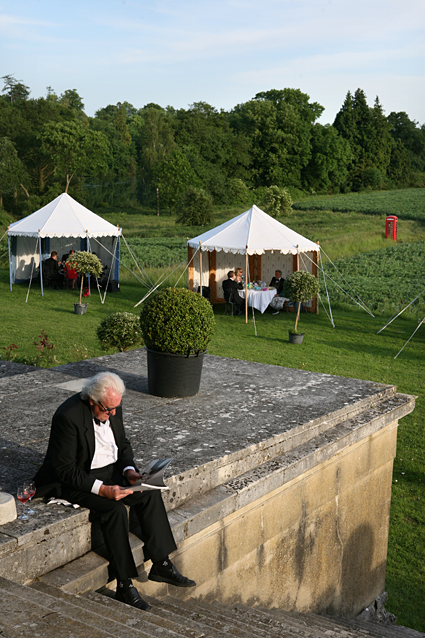
attended Party in the Park on the village green in Stathern;
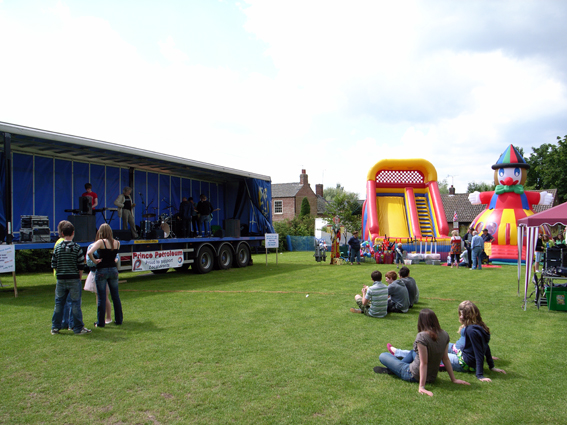
rocked out at the Download Festival (Jemima was just about the only child amongst the 100,000 black-clad revellers);

and watched the dress rehearsal of the musical High Society at Emmanuel College, put on by the Cambridge University Amateur Dramatics Club.
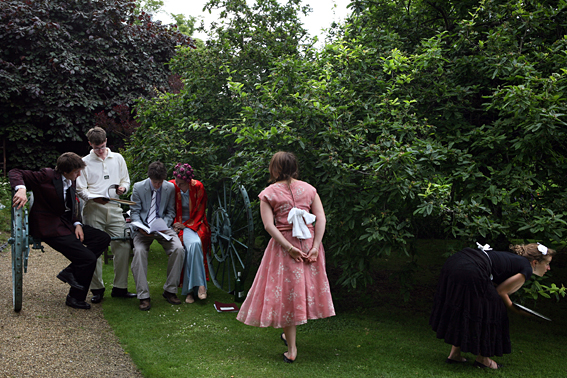
Â
Posted in EVENTS & PASTIMES | Comments Off on A MUSICAL THEME
The most interesting idea to surface during our stay in Essex was emailed to me by a teacher from St. Philips Priory School in Chelmsford, who invited me to photograph the school’s last ever sports day to be held in their eighty year history. The event featured all the old favourites, the egg and spoon race, sack race and the highly competitive parents sprint!
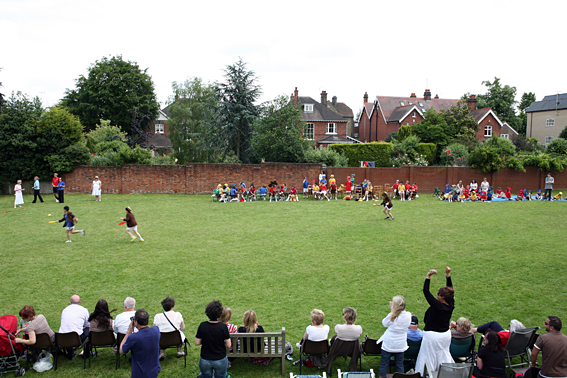
St. Philips was founded as a fee-paying school in 1927 by the Servite Sisters with 30 children on the roll. Originally, there was a primary and secondary school until 1954; now, it is just primary. Although a Catholic faith school, they have welcomed children of all faiths and it was fascinating to see how many Hindu and Muslim parents had enrolled their children (in one class, Christian children were actually a minority,) presumably in recognition of the school’s excellent Ofsted results and the fact it’s a feeder to the local grammar.
Sadly, the Sisters are having to sell the school as the majority of the order are getting quite old and need to start providing for their later years. The news came as a huge blow to the students, parents and staff. Several of the staff had been students at the school themselves. The teacher who contacted me was one of three generations of her family to attend. Despite an active campaign to save the school and keep it independent, efforts have failed, and a neighbouring private school in Chelmsford (sold to St. Cedd’s Educational Trust, a charity that already runs another primary school in the local area, St. Cedd’s School) has bought the site.
Â
Posted in EVENTS & PASTIMES | Comments Off on A SUMMER SPORTS DAY
We were at the Wychwood Festival this weekend, held at Cheltenham Race Course. An intimate event started four years ago, which has quickly established itself as the first major festival of the summer season.
The highlight was The Imagined Village who performed on Sunday night.Â
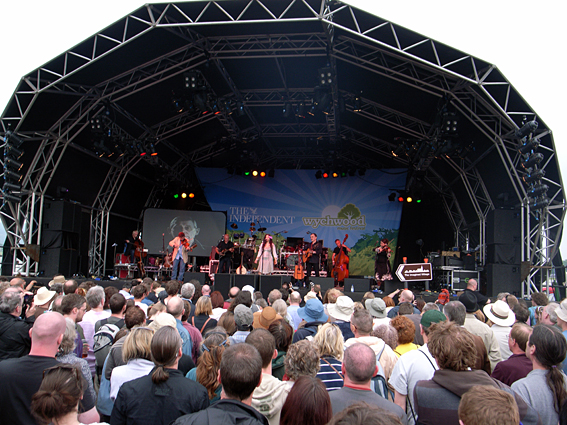
The Imagined Village is an ambitious project bringing together folk musicians including Eliza and Martin Carthy with established pop and rock acts – Paul Weller, Billy Bragg – and a flavour of multicultural England from Transglobal Underground, the British-Asian singer Sheila Chandra and the poet Benjamin Zephaniah.
The project has been masterminded by Simon Emmerson, a DJ and producer best known for his work with the Afro-Celt Sound System and with African acts such as Baaba Maal and Manu Dibango. Emmerson was determined for traditional English music to assume its rightful place on the “world music” scene.Â
The aims of the project, as stated on their website, are:
“We started this project back in 2004 as a way of exploring our musical roots and identity as English musicians and music makers. There is a lot of discussion in the media at present about what constitutes the English identity, we hope to use this web site and our first record as a contribution to this discussion. We are not trying to re-invent the wheel or for that matter re-invent the English folk tradition. What we are interested in is building an inclusive, creative community were we can engage in the debate passed down to us by the late Victorian collectors of English song, dance and stories spearheaded by Cecil Sharpe and his contemporaries.
We all walk in the footsteps of our Victorian song collecting ancestors but feel it is more relevant now than ever to question who decides what it is to be authentic and English and more importantly what it is that makes us proud to be English musicians. We are not providing a manifesto or for that matter any easy answers.”
Read more about the project in an article which featured recently in the New Statesman.
Or find out more about the individual artists-
Benjamin Zephaniah
Billy Bragg
Chris Wood
Eliza Carthy
Johnny Kalsi
Martin Carthy
Paul Weller
Sheila Chandra
Simon Emmerson
The Copper Family
The Gloworms
Tiger Moth
Trans-Global Underground
Tunng
Â
Posted in EVENTS & PASTIMES, INSPIRATION | Comments Off on THE IMAGINED VILLAGE
“I’ve wasted the whole of my life playing this game. It’s claimed my knees and it occupies every spare synapse in my brain. I’m not even sure I like it anymore…”
The Nightwatchmen: an amateur London cricket team, making up for in enthusiasm what they lack in ability. As they gather on a sunny Sunday to face Bernard and his ethnically diverse and highly talented squad, Will, Thiz, Clive and their team-mates spend the day smoking, drinking tea and discussing love, politics and the correct interpretation of the LBW law.
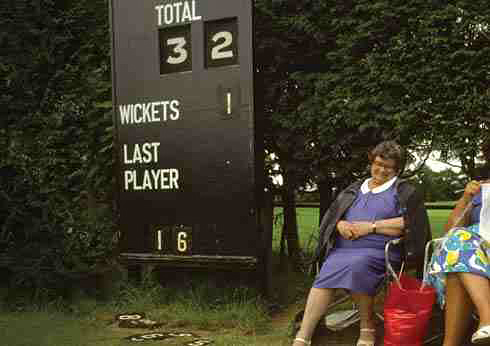
Richard Bean’s witty new play, The English Game, which explores the modern British psyche and sate of the nation through a simple game of cricket, is getting some good reviews and can be seen this coming week at the Oxford Playhouse.
Â
Posted in EVENTS & PASTIMES | Comments Off on THE ENGLISH GAME
On Sunday evening we attended a jazz concert and hog roast in the grounds of Maunsel House, the ancestral seat of the Slade Family and home of Sir Benjamin Slade. The thirteenth century house is where Geoffrey Chaucer allegedly wrote part of the Canterbury Tales.
In an interview in the Daily Mail on the occasion of the house opening to the public for the first time (dated August 26th 1986) Sir Ben is quoted as saying that he wanted to take the “stuffiness†out of stately home visiting. “Most houses do it on a show-off scale, but the majority of visitors don’t feel relaxed. Here they can do what they want- even grill a streak in the grounds. It’s the unstateliest home in England.â€
While Maunsel has been vastly improved, with most of the dry rot and rising damp that greeted visitors twenty years ago now gone, there is still a distinct feeling that this is anything but a museum piece of a stately home. Especially when compared to the experience of visiting a National Trust property like Knightshayes Court, where we’d spent the morning in an attempt to escape the torrential rain.
What’s more interesting, however, is Sir Ben’s quest to find an heir to this £7.5 million country pile. Having no children of his own, this eccentric, right-wing aristocrat has made international headlines thanks to his world-wide hunt for an appropriate Slade to continue his blood-line. No matter if he’s English or not.
It was even suggested last year that he had found a close DNA match in Isaac Slade, singer with Denver-based band The Fray. The 26-year-old has shown no indication of wanting to take on Maunsel, though he has formed an improbable friendship with the baronet.
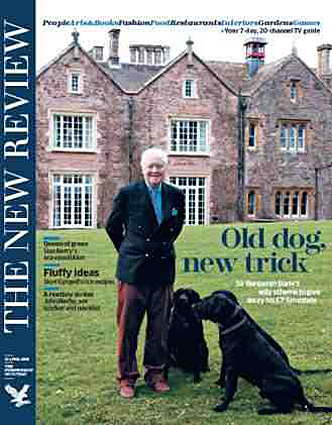
To find out more about Sir Ben’s quest, read this recent interview in the Independent on Sunday Review by Robert Chalmers.
Â
Posted in EVENTS & PASTIMES | Comments Off on AN HEIR FOR ENGLAND’S UNSTATELIEST HOME
Yesterday I was in Weston-Super-Mare photographing a lawn bowls match at Clarence Bowling Club. Having commented on what a plush club house they had, I was told the story of Les Andrews.
Les was a life-long member of the Clarence Bowls Club, having bowled there for 52 years. He was a keen bowler, although in his latter years he would often be seen sitting up at the bar enjoying a drink with other older members of the club. A humble man, he lived in a modest flat in Weston. He didn’t own a car and rarely went on holiday. After his death a few years ago the trustees were shocked to discover he’d left the club £500,000 in his will (with the remaining £500,000 of his estate going to the National Trust). Which was slightly fortuatous as they’d just failed in a bid to secure National Lottery funding (bowling is not deemed ethnically diverse enough). And so was built the Les Andrews Club House.Â
Posted in EVENTS & PASTIMES | Comments Off on GOD BLESS LES ANDREWS
“Town braces itself for arrival of gypsies†ran the headline in the Wilts and Gloucestershire Standard last week in reference to the bi-annual Stow Gypsy Horse Fair. The Cotswold town of Stow-on-the-Wold has held the fair since 1476, when it was granted a royal charter and it took place this year on Thursday 15th May.
Thousands of travellers, most of them Romany gypsies, descend upon this decidedly conservative town, arriving in the modern caravans and lorries which have largely replaced the brightly painted wagons that visitors would have seen thirty years ago. The gypsies trade horses and erect tents and stalls selling goods ranging from plastic toys to fake mink coats for children.
In recent years local residents have expressed increasing dissatisfaction with the disruption the fair brings. Political correctness is abandoned as they talk of ‘thieving gypsies’ and wonder at the fact that many of the travellers cannot read or write properly. In 2000, a court injunction threatened every trader at the fair with imprisonment if they camped overnight in the field in which it is held. The gypsies got around this simply by buying the field.
At Stow’s Tourist Information Centre the polite, well-dressed lady manning the desk informed us that the event wasn’t welcome but that the authorities were powerless to stop it. She talked of businesses deciding to close, rather than face theft or damage to their properties and sure enough, most of the shops, B&Bs and local pubs all had hand-written ‘closed’ signs hanging in the window.Â
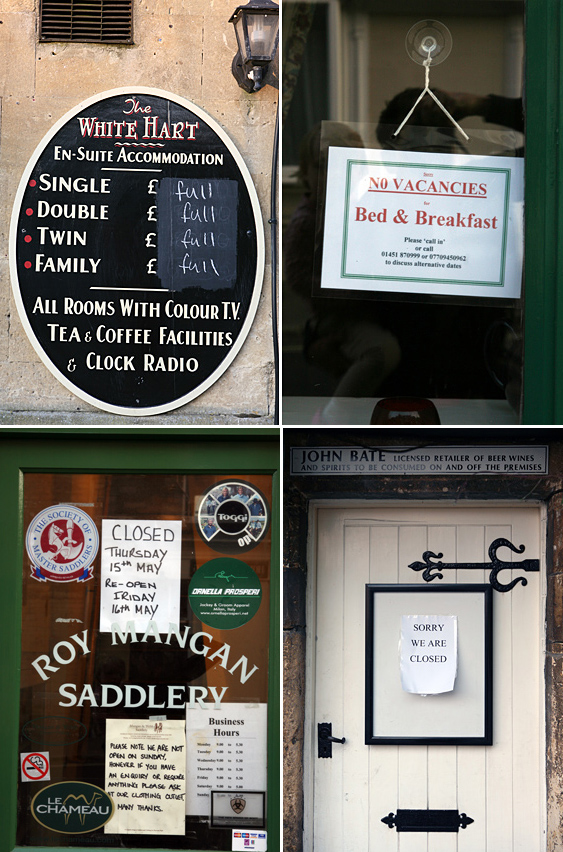
I particularly liked the unnecessarily elaborate notes pinned in some shop windows. “We are now closed due to kitchen refurbishment and re-open Friday 16th May†(the day after the festival) and “The Crock will be closed on May 13th, 14th and 15th for alterations and improvements†(no sign of alterations when I passed).
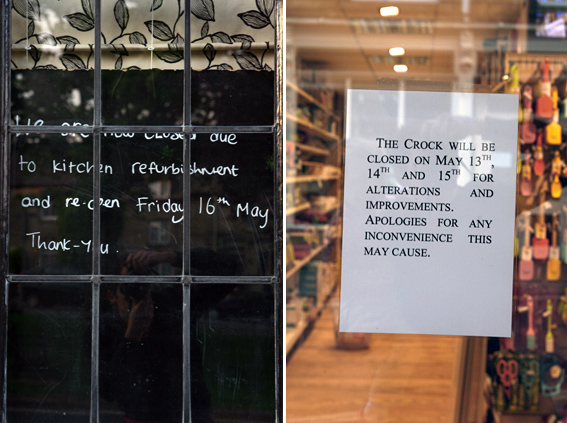
Our camper van provoked an amusing reaction. Parking up for the night at Stow Rugby Club, we were approached by a member of the club to check that we’d paid. We assured him everything was in order. “Oh,†he said unapologetically, “I thought you were with the fair.â€Â Then, reassured of our ‘respectability’, “If you go, watch your pockets. Some of those kids will have your wallet in an instant.â€
A few days later, while staying on a small campsite in the Forest of Dean, we heard the unmistakable beat of a large sound system booming out in the middle of the night. An all night rave in this ‘heart-shaped land’ that inspired the term ‘picturesque’ and all those genteel 18th and 19th century tours! (see footnote below).  Our fellow campers were not impressed. The owner of the campsite relayed the latest information in disparaging terms every time her telephone rang.
I cycled off in search of this spectacle, lugging my tripod and camera on my back. It took me an hour to find it, but it was worth it, greeted as I was by the surreal sight of a transit van spilling out huge speakers, around which were gathered about fifty people all distinctly the worse for wear, head banging and lolling around, but in a beautiful pine clearing in the forest. I managed a few pictures before the police arrived and stopped the proceedings. (For an online article about raves in the Forest of Dean see this link).
It’s clear that most people do not want unofficial, disruptive and noisy events taking place within the vicinity of their homes. They worry about damage to property and land. But I felt that such events enrich our cultural and social landscape, which can seem increasingly sterile and regimented, and are expressions of diversity of people and place and as such, should be enjoyed (responsibly, of course!)
Â
Footnote- The Birthplace of British Tourism
The Wye Valley and Forest of Dean witnessed the birth of British tourism in the eighteenth century. The area became widely known following the publication in 1782 of Observations on the River Wye by the Reverend William Gilpin. The first illustrated tour guide to be published in Britain, it helped travellers locate and enjoy the most “picturesque” aspects of the countryside. The Wye Valley’s particular attraction was its river scenery, and the many guidebooks, engravings and paintings ensured a continuing steady stream of visitors which grew after the building of a new turnpike road up the valley in 1822 and the opening of a rail line in 1865.
Â
Posted in EVENTS & PASTIMES | Comments Off on NOT IN MY BACKYARD
We’re currently in the Malvern Hills, marketed by the local council as ‘Elgar Country’. According to Brian Micklethwaite, writing on the Icons of England website “The Malvern Hills epitomise England’s ‘green and pleasant land’. They are not an icon solely devoted to London but represent all England, especially when associated with the quintessentially English music of Sir Edward Elgar.â€
We were in Malvern visiting some old friends of ours, Margarette Rolle and her partner Vassily Savenko. Margarette is the promoter of the Boyan Ensemble of Kiev (I spent a month on tour with the Ensemble in 1997 producing one of my first photo essays after graduating). Vassily is an acclaimed bass baritone.
During our stay I spotted a poster in a local shop window advertising a sponsored walk across the Malvern Hills in aid of St. Richard’s Hospice. I went along this morning to watch as a few hundred people walked across this stunning landscape to raise money for the hospice, which cares for patients and families in Worcestershire who are living with cancer and other life-threatening illnesses. As Judy Hughes, one of the walkers I met, said to me “In my opinion spending your leisure time helping others is one of the most rewarding and enjoyable things to do”.
It’s only right to leave you with a link to the Malvern Hills and Elgar.
Posted in EVENTS & PASTIMES | Comments Off on ELGAR COUNTRY
There’s an interesting feature in today’s Independent on Sunday Review on the secret resurgence of Morris dancing!
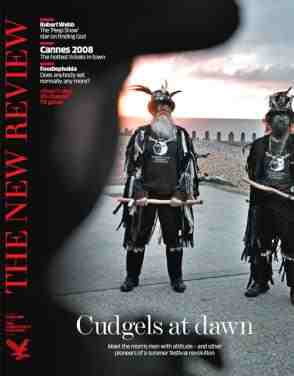
You can read “Hey nonny no, no, no: Goths and pagans are reinventing morris dancing” by Cole Moreton here. Photographs are by Tom Pilston. The article also features the Long Men Morris who I photographed on May 1st – see my blog entry below.Â
Â
Posted in EVENTS & PASTIMES | Comments Off on MORRIS MEN
I’ve just started reading H.V.Morton’s classic travel book In Search of England, an enduring account of Morton’s ramblings through the English countryside in the early days of the motorcar which was first published in 1927. Like Morton, we’ve begun our journey heading West from London.Â
This past week has seen us travelling through Berkshire and Wiltshire. We’re currently in the historic Roman town of Cirencester having just photographed the Swindon Kite Festival in Lydiard Park (somewhat spoiled by a distinct lack of wind!) and Cheltenham vs Eton at Cirencester Polo Club.
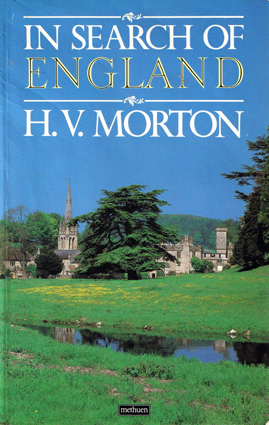
“It is afternoon. It has stopped raining, and the sun has come out; so has the entire country. Those lonely mansions set upon a hill, or lying snug in woods, which six days out of seven appear dead, prove to be inhabited by colonels, majors, Sir Alfred This and Lord That. It is a startling coming-to-life. The recently desolate roads are alive with limousines- luncheon baskets on top, the girls inside, and the major driving.”
This passage, where Morton visits a Point-to-Point hunt near Beaulieu, could easily be used to describe the scene I found today at Cirencester Polo Club. The match was held in the grounds of Lord and Lady Bathurst’s estate (which has been in the family since 1695 when it was purchased by Sir Benjamin Bathurst). I was given permission to attend and photograph the event by Major Nicholas Musgrave, Chairman of the polo club (and whose daughter, Arabella, was Prince William’s first girlfriend, whom he dated before university), on the proviso that I was “legit and had no intention of doing a hatchet jobâ€.
The polo was taken very seriously and the skill of the young riders was obvious even to a novice. It was slightly embarrassing having to park our motorhome next to an Aston Martin DB7 and we certainly hadn’t brought our Fortnum and Mason hamper, which seemed to be de rigor.
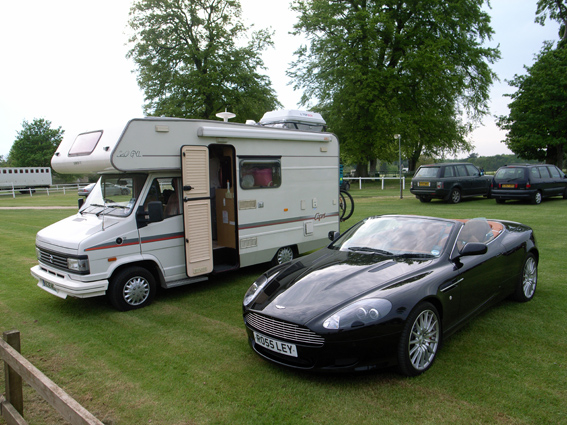 Â
Â
Only a few hours earlier we had been in the grounds of Lydiard Park in Swindon. People were gathered there in much the same way as they congregated at the polo match: arriving in their cars with friends, bringing food and drink, wearing their preferred summer clothes. Sartorial codes differed however: in Swindon, the males were topless, tattooed and wearing shorts, in Cirencester, the favoured look was blue shirts and khaki slacks. One group played polo, the other played football; one group drank lager, the other praised the quality of the champagne. This is England’s class system at its most pointed, but it also demonstrates that whatever differences class and money might make, people still inhabit and utilise their immediate environments in much the same way. Our rituals, pastimes and mode of discourse are, in some senses, quite uniform as we respond to the call of a sunny day and the freedom of green, open spaces.
By the way, I wonder which mode of transport Morton would have opted for if he was making his journey around England today- Talbot Swift motorhome or Aston Martin DB7?
Posted in EVENTS & PASTIMES | 1 Comment »














